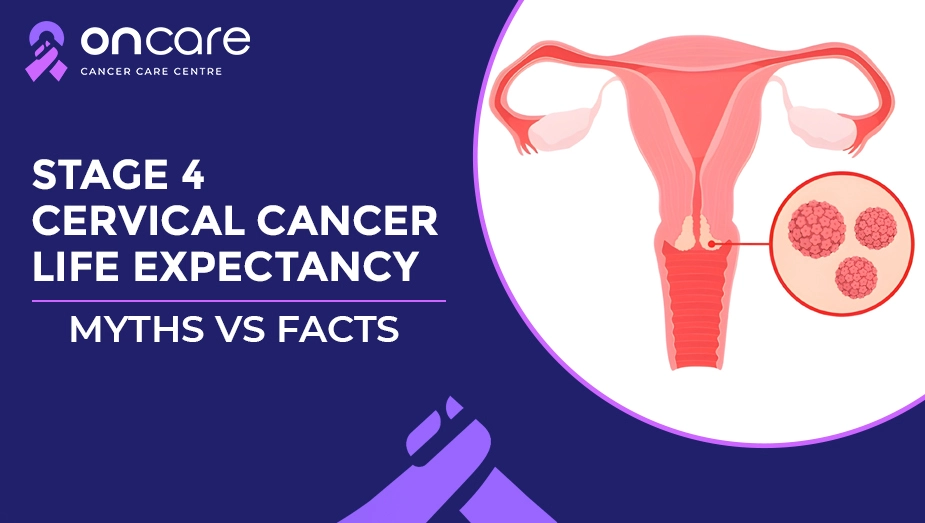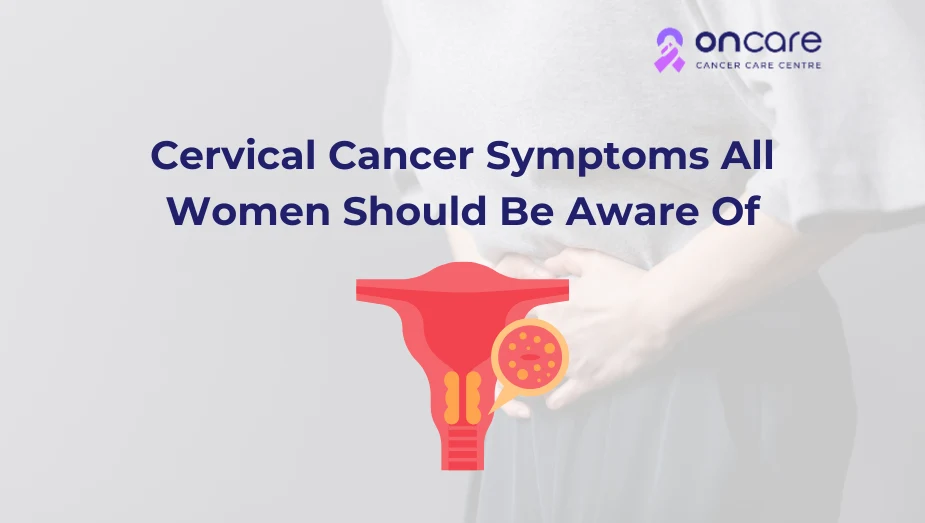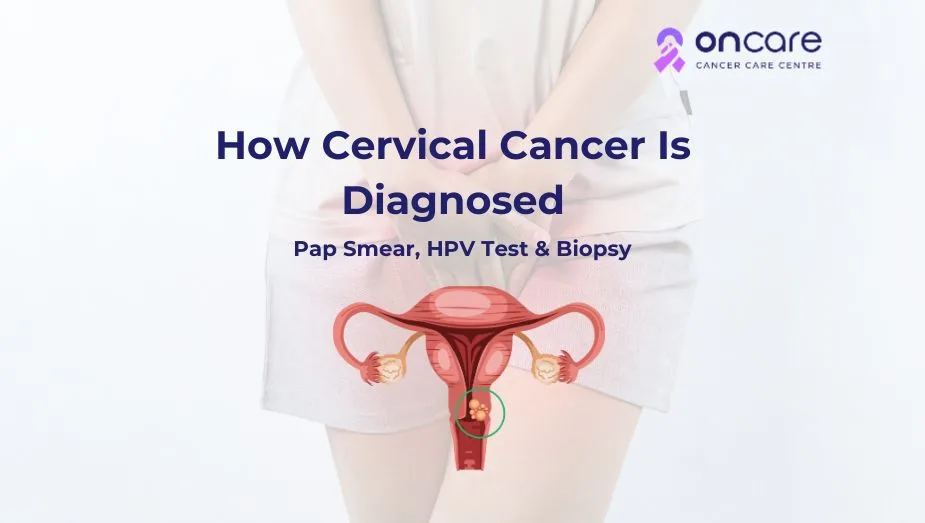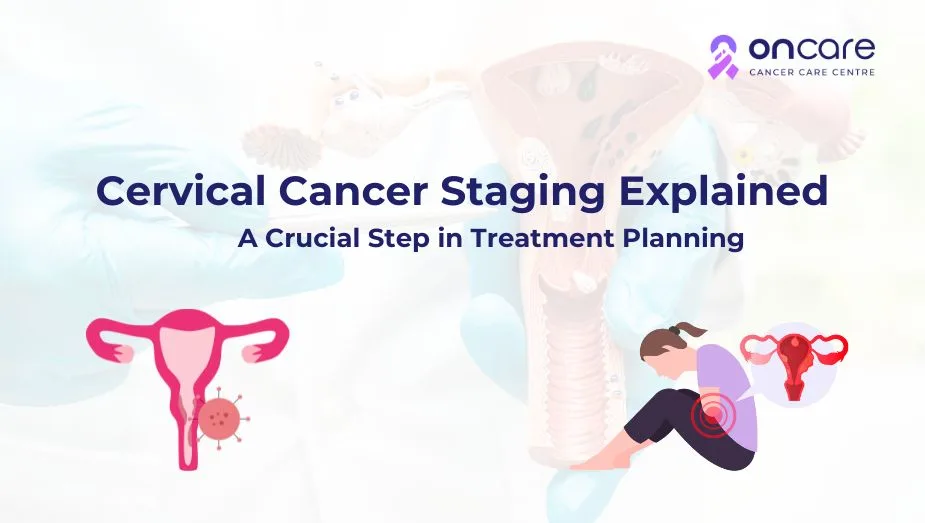Table of Contents
What is Cervical Cancer and How Does It Develop?

Just imagine how easy it can be to save your life with a simple test or a vaccine. If we learn more about cervical cancer, we can often prevent it or start treatment earlier. But sadly, many women around the world still die because they lack adequate information or don't get tested in time. So, in today's article, we'll explain what cervical cancer is and how it occurs.
Learning about the cervix and what it does
It's helpful to know what the cervix is before we talk about cervical cancer. The cervix is the narrow, lower part of the uterus (womb) that joins the vagina. It works like a small door between the vagina and the uterus. It opens up during childbirth so that the baby can get through. It also makes mucus that either helps or stops sperm from getting into the uterus, depending on where you are in your menstrual cycle.
The cervix is a small part of the body, but it is very important for women's reproductive health. Cells in the cervix can become cancerous when they start to change and grow in ways that aren't normal. That is what we call cervical cancer.
What Is This Kind of Cancer? (What Is Cervical Cancer)
Cervical cancer starts in the cells of the cervix. In most cases, it starts with changes that are not yet cancerous. This means that the cells in the cervix start to look and act strangely, but they are not yet cancerous. You can find and treat these changes before they become cancer.
There are primarily two types of cervical cancer, contingent upon the specific cells involved:
- Squamous cell carcinoma begins in the flat, thin cells that cover the outside of the cervix.
- Adenocarcinoma begins in the glandular cells that line the cervical canal.
Both kinds can be dangerous, but the good news is that cervical cancer grows very slowly, so doctors can find it and treat it before it becomes life-threatening.
How Does Cervical Cancer Grow?
Cervical cancer doesn't happen all at once. It takes years and is done in steps. A virus called human papillomavirus (HPV) often infects the cervix first. Let's see how it grows:
The HPV virus can change the DNA of cervical cells when a woman gets it. Most of the time, the immune system can fight off the virus on its own, and most infections go away on their own. But in some cases, the infection stays in the body for a long time. This is what doctors call a persistent HPV infection.
Over time, the persistent infection can make cells in the cervix grow out of control. If not treated, these abnormal cells can turn into a growth or tumor that can spread deeper into the cervix and to other parts of the body. This is when it turns into cervical cancer.
The Part That HPV Plays
The main reason for cervical cancer is HPV. This virus is very common and spreads through sex. Most people who are sexually active will get HPV at some point in their lives. There are many kinds of HPV, but only a few are thought to be high-risk and can cause cancer.
A lot of women get HPV, but only a few of them will get cervical cancer. This happens when the body can't get rid of the virus, and the infection stays for years, changing the cells in the cervix.
Other Things That Can Make You More Likely to Get Cervical Cancer
HPV is the main cause, but other things can make cervical cancer more likely. These are:
- Smoking: Tobacco can hurt the DNA of cervical cells and make the immune system weaker, which makes it harder to fight HPV infections.
- Women with weak immune systems, like those with HIV/AIDS, are more likely to get this.
- Having a lot of sexual partners or a partner who has had a lot of sexual partners makes it more likely that you will be exposed to HPV.
- Having sex at a young age: Having sex at a young age increases the risk of getting HPV.
- Long-term use of birth control pills: Taking birth control pills for a long time may slightly raise your risk.
- Poor hygiene and nutrition: Not taking care of your genitals and eating poorly can also make things worse.
Cervical Cancer: Signs and Symptoms
Cervical cancer usually doesn't show any clear signs in the early stages. That's why it's so important to get checked regularly. When symptoms do show up, they could be:
- Unusual vaginal bleeding, like after sex, between periods, or after menopause
- Vaginal discharge that smells bad or is watery
- Pain during sex
- Pain in the pelvis or lower back
If the cancer spreads to nearby areas, it could make the symptoms worse, like making it hard to urinate or making your legs swell. These symptoms can also be caused by other things, so it's always best to see a doctor for a proper diagnosis.
How to Find Out if You Have Cervical Cancer
Finding things early saves lives. The Pap smear (Pap test) and the HPV test are the two most common tests for cervical cancer.
A Pap smear is a test that looks for abnormal changes in a small sample of cells taken from the cervix and looked at under a microscope. The HPV test checks for the virus that can cause those changes.
If the results are not normal, doctors may suggest more tests, like a colposcopy (using a special microscope to look closely at the cervix) or a biopsy (taking a small piece of tissue to test).
The best way to find any changes early, before they turn into cancer, is to get screened regularly.
Consult Today
Cervical cancer is one of the easiest cancers to avoid and treat if you catch it early. Women can avoid this deadly disease by getting regular screenings, getting the HPV vaccine, and living a healthy lifestyle. The first step is to be aware of what cervical cancer is and how it develops. This gives women the power to take charge of their health.
If you or someone you care about has cervical cancer or wants to know how to avoid it, Oncare Cancer Hospital has the best treatment, the newest technology, and the most caring staff. Their team of experts makes sure that each patient gets the best care and attention possible. Your health and life are important. Take that step today with Oncare Cancer Hospital.
Frequently Asked Questions
Cervical cancer is a type of cancer that starts in the cells of the cervix, which is the bottom part of the uterus. It usually grows slowly after being infected with the human papillomavirus (HPV) for a long time.
A long-term infection with high-risk types of HPV, a common virus that spreads through sexual contact, is the main cause.
Yes. Getting the HPV vaccine, getting regular Pap or HPV tests, and having safe sex can all lower your risk a lot.
In the early stages, there are usually no symptoms. Later, there may be unusual vaginal bleeding, discharge, and pain during sex.
Yes, if cervical cancer is found early, it can be completely cured with the right care from experienced doctors.
Book an Appointment
Related Blogs

Stage 4 Cervical Cancer Life Expectancy: Myths vs Facts
Explore more about stage 4 cervical cancer and life expectancy, and myths and facts about stage 4 cervical cancer and what are the complications of this cancer!

Cervical Cancer Symptoms All Women Should Be Aware Of
Discover more about the common cervical cancer symptoms and how to prevent this cancer in women, and its complications in women and when you should consult a doctor.

How Cervical Cancer Is Diagnosed: Pap Smear, HPV Test & Biopsy
Learn more about how cervical cancer is diagnosed using Pap smears, HPV tests, and cervical biopsies. Explore how each test is performed for early diagnosis!

Cervical Cancer Staging Explained: A Crucial Step in Treatment Planning
Discover more about cervical cancer, causes and symptoms, diagnosis and tests, risk factors and how cervical cancer staging impacts in its treatment options.

